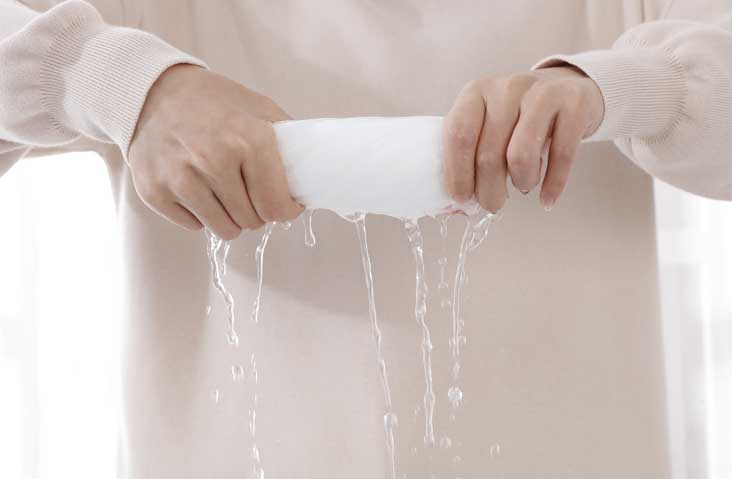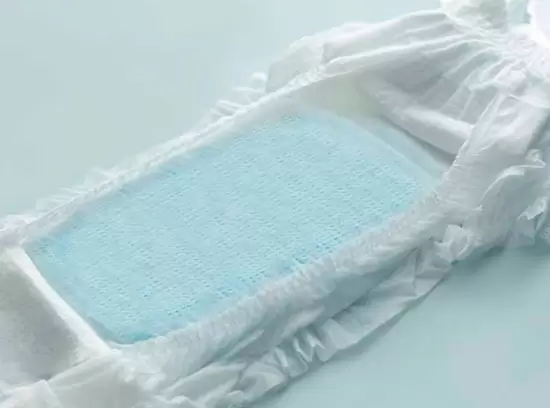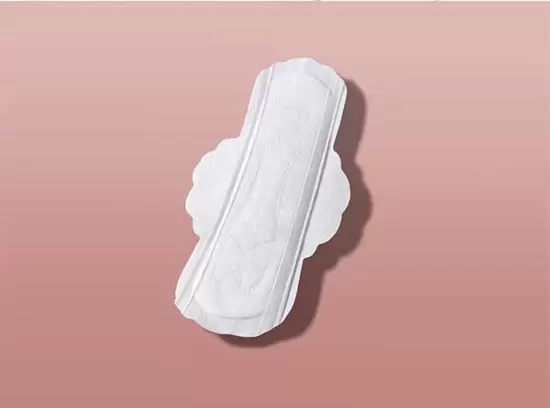What is the Difference Between Hydrophobic and Hydrophilic Non-Woven Fabric?
First of all, let’s see what is the difference between Hydrophobic and Hydrophilic. From the literal meaning, it can be seen that the two are completely opposite. One way to remember hydrophobic and hydrophilic is to remember Hydro – the word means “water” in Greek. Then Phillic means “love” in Greek and Phobic means “fear”. The difference between hydrophobic nonwovens and hydrophilic nonwovens is mainly reflected in:
1. Comfort: Hydrophilic non-woven fabrics easily absorb moisture without making users feel uncomfortable, while hydrophobic non-woven fabrics do not absorb moisture.
2. Environmental protection: Generally speaking, natural fibers such as cotton and wool are hydrophilic, which makes them more environmentally friendly materials. While synthetic materials such as polyester and nylon are hydrophobic, synthetic materials are generally not sustainable and non-degradable.
3. Water absorption: Hydrophobic and hydrophilic actually reflect the water absorption of spunlace nonwoven fabric. Water absorption is a very important property that affects many other properties such as skin comfort, static buildup, shrinkage, water resistance, and wrinkle recovery. In general, hydrophilic nonwovens that are good at absorbing moisture are more receptive to dyes and finishes than hydrophobic nonwovens.
Hydrophilic Non Woven Fabric Definition and Example
What is hydrophilic non-woven fabric? In fact, most non-woven fabrics are not hydrophilic or directly waterproof, except for non-woven fabrics made of naturally hydrophilic fibers, such as cotton and wool. However, synthetic fibres themselves have almost no hydrophilic groups, which cannot achieve the hydrophilicity required by some products. In order to make these non-woven fabrics made of synthetic fibers hydrophilic, it has to be achieved by adding a hydrophilic agent during the production of the non-woven fabric, or by adding a hydrophilic agent to the fibre during the fiber production process. According to the degree of hydrophilicity, hydrophilic non-woven fabrics can also be divided into single hydrophilic non-woven fabrics (that is, one kind of hydrophilicity), multiple hydrophilic non-woven fabrics (that is, multiple hydrophilicities), and weakly hydrophilic non-woven fabrics.
Hydrophilic non-woven fabrics have good hygroscopicity and liquid absorption rate, and can be used in products that must absorb liquid and moisture while maintaining their strength and structure, such as medical, hygiene, industry, agriculture and other fields.
Example:
● Diapers (babies and adults)
● Bedsheet
● SPA products
● Disposable medical supplies
● Other hygiene products
Hydrophobic Non-Woven Fabric Definition and Example
In chemistry, hydrophobicity refers to the physical property of a molecule (hydrophobe) and water to repel each other. Some synthetic fibers are naturally hydrophobic. In other cases, coatings and treatments also convert naturally absorbent fibers such as cotton into hydrophobic materials.
Hydrophobic nonwovens have extremely low water absorption and high stability against water penetration. They are uniform, have high tensile strength, and have a low strike rate over time. This fabric is used in products designed to provide a dry barrier while resisting moisture, including medical products, home decoration, apparel linings, agricultural products, and more. Hydrophobic non-woven materials can be made from polyester, rayon, cotton, and blends.
Example:
● Packaging and shopping bags
● Agricultural seedling cloth
● Seedling insulation cloth
● Industrial protective cloth
● Medical protective clothing
● Tablecloth
Winner started to produce biodegradable non woven fabric in 2005, and developed a variety of cotton-based medical and health care products based on them. Since cotton fiber is cellulose with a large number of hydrophilic groups, and has a porous structure, cotton non-woven fabrics have excellent hygroscopicity and wicking effects. According to different application scenarios and product requirements, we have performed various special treatments on the non woven spunlace fabric, such as dryness, dyeing, softness, antibacterial, spunlace composite, etc. Cotton spunlace non-woven fabrics are excellent in the application of sanitary pads, cotton tissue, wet wipes, baby and adult diapers, and other products. As a leading non-woven fabric manufacturer, we provide customers with diversified product solutions based on market demand and changes in consumer trends.














